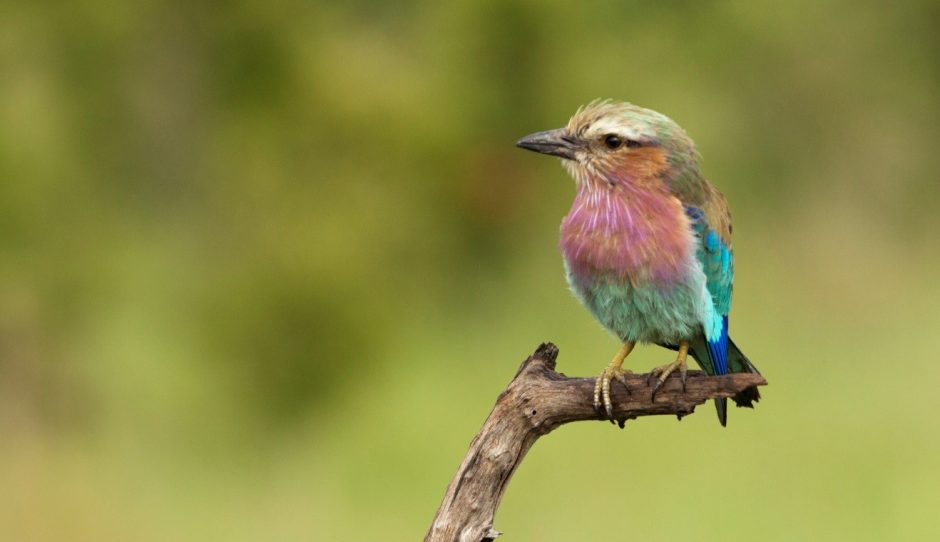
Tips for Bird Photography while on Safari
I’ll be honest, when up against the incredible mammals of Africa, it takes a bit of a special love and appreciation to direct your attention away from, say, a stalking lion or herd of elephants, to then focus on our feathered friends. However, if you don’t spend at least a little time during your safari with the birds, you’re missing out on not just a fascinating part of the natural history, but also some prime photo opportunities. Simply put, Africa’s birds are some of the most charismatic, colorful, and easiest to photograph in the world.
Make sure the bird really stands out
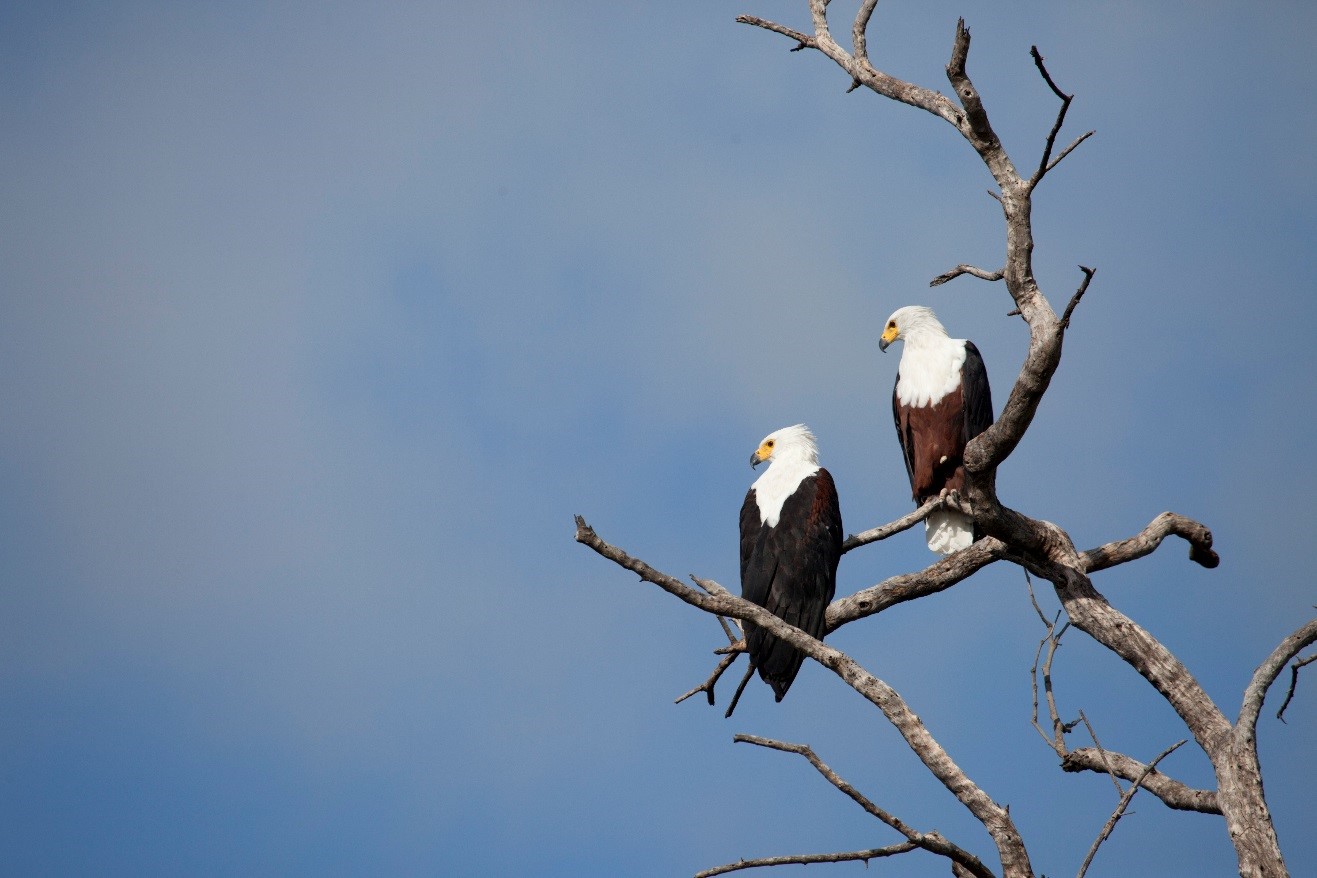
One of the challenges with bird photography is that it can be difficult to make birds really stand out from their environment. However, the more they stand out, the better photo you’ll get. One way to do this is to train yourself to identify stand-out aspects of a bird photo. The one above showcases one technique, which is to wait until the bird lands or perches in an area with minimal other “distractions” around it. A dead tree is a great place to not only look for, but also to photograph birds, as they tend to be magnets for some of Africa’s big showy eagles and owls, like the above pair of African fish eagles.
If you aren’t so lucky to have them high above the grasses and foliage, you can use advanced camera settings to help mitigate such distractions. My top technique is to program my camera for a very shallow depth of field. If you are comfy using Aperture Priority mode (usually denoted as Av or A on the dial) this is my top pick, as you simply need to dial your f/stop to the smallest number possible (usually somewhere between f/2.8 and f/5.6). What this does is it limits the focus to only what you are physically focused on, thus blurring out the background. If you prefer more automatic settings, find in your camera’s manual how to set your camera to “portrait mode” and this will generate similar effects.
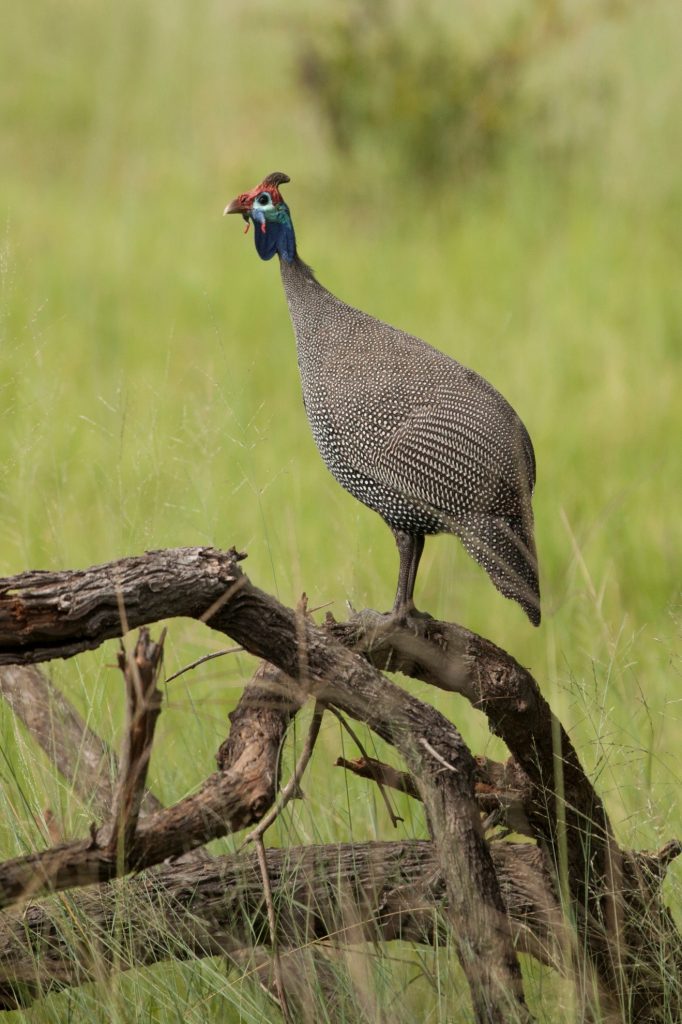
See how the background, if it were in focus, would be quite distracting in the above photo? In this case, with the properly-blurred background, the textures and colors of the grasses are less noticeable, allowing the viewer unimpeded attention on the bird.
Aim for even lighting
Below is an example of the challenges with birds and even lighting. Not my favorite shot, and not my favorite conditions…
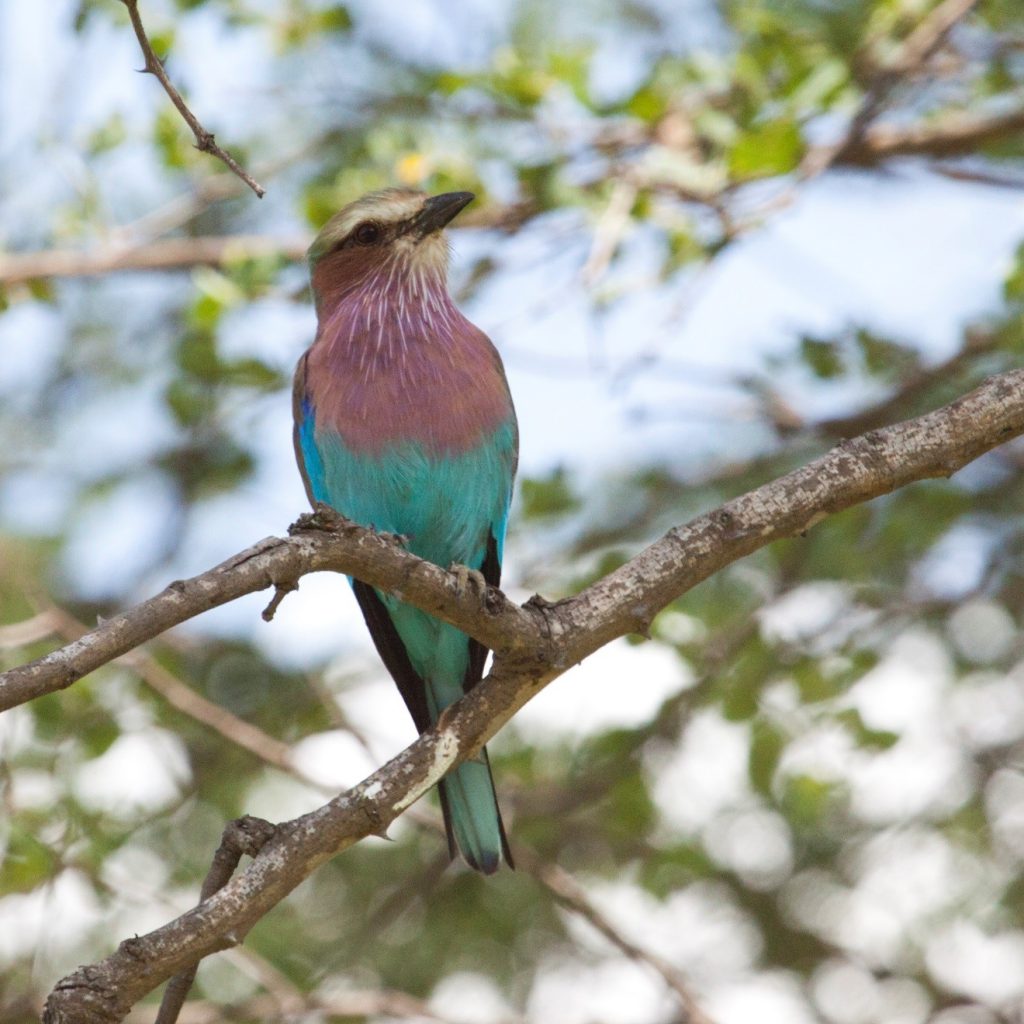
It’s a fairly common behavior for birds to perch on branches that are A) above your head, so you’re shooting upwards and B) on a dimly lit branch such that the background is brighter than the bird. In the above shot, I had to do quite a bit of post-processing to lighten the bird, but in my opinion it still doesn’t really look that good.
Thus, focus your efforts primarily on birds that are evenly lit with their surroundings, like the below shot. No really bright spots, no really dark spots of the photo. This is the kind of photo I’m always trying to get while photographing birds (and notice the nicely-blurred background?).
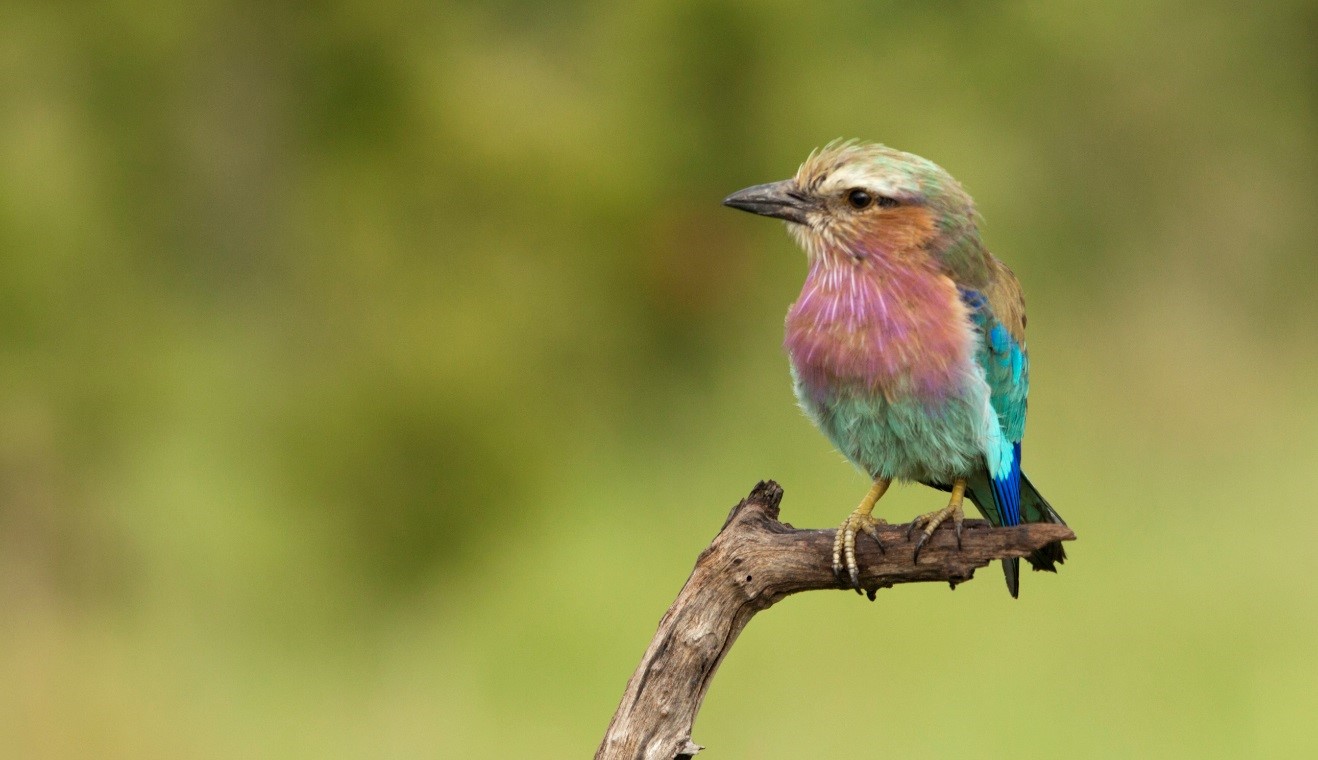
Show a little behavior (or personality) of the bird
For some of our smaller species of African wildlife, they sure can present some attitude! This is photography gold, as you’re perhaps capturing an expression or behavior that other photographers have not previously captured…ever. These differentiators are what make your photo stand out, not just to friends and family, but also to folks like editors and webmasters, if you are barking up that tree, too.

And next to showcasing a little bird attitude, showcasing behaviors in an action shot is a great way to bring bird photos to life, especially if they aren’t particularly remarkable scenes in the first place.
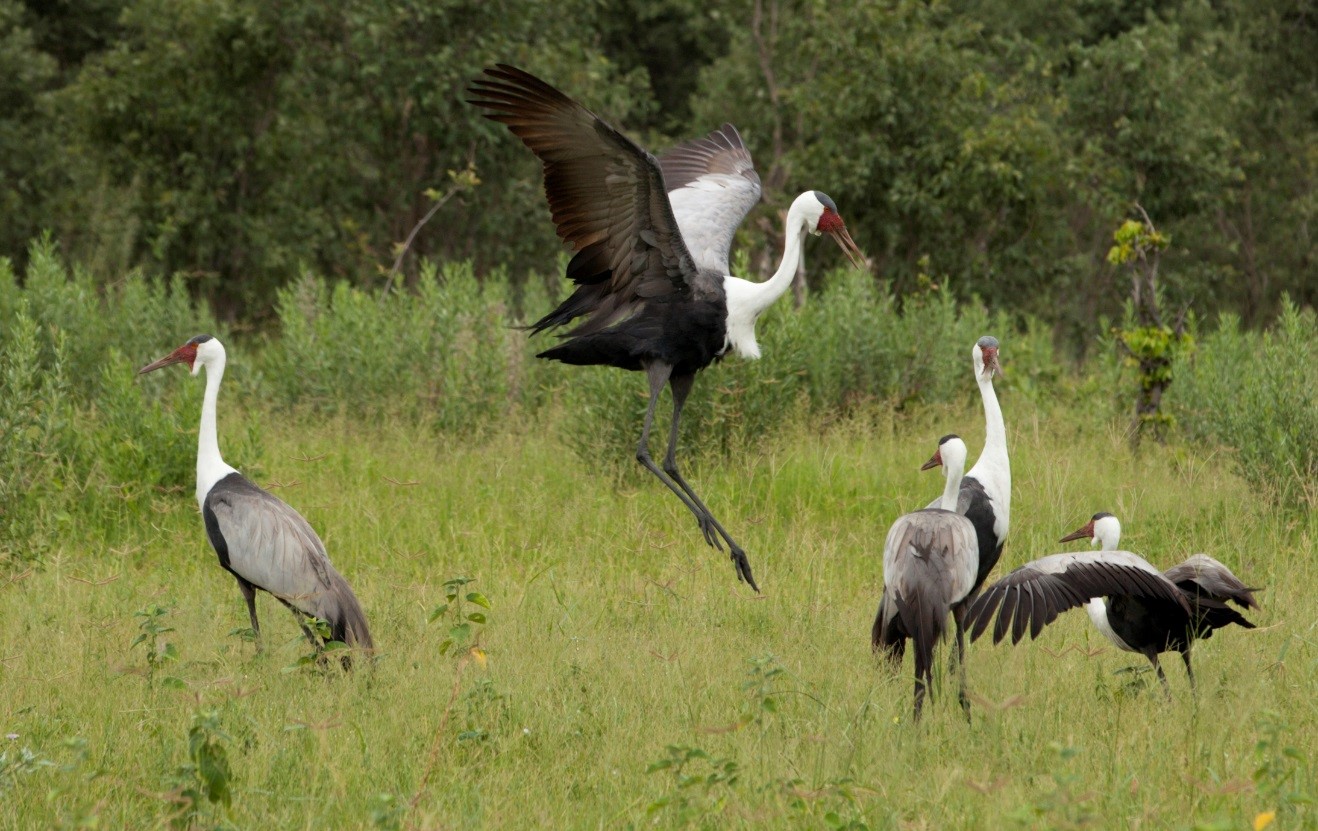
At the end of the day, some of these tips may be self-explanatory, especially the one above, about showcasing behavior and personality. Generally speaking, photographing wildlife behaviors makes for a more interesting photo than just a stationary animal. “So, yes Court, we’d like to photograph that, but it’s not always that easy”, is probably what you’re thinking right now.
Thus, my 4th bonus tip is more of a follow up to the third one, in that it’s critical to be patient and wait for the shot, when it comes to birds. Want to get a photo of that cute bee-eater taking off from its branch with wings extended in brilliant color? Save your photos for the exact moment that it takes off, rather than continuing to shoot a stationary bird, which makes you slightly less ready each time you fire the shutter. Sometimes we’re so eager to just document what we’re seeing, when it comes to rare birds, we snap photos just to ensure we get one in focus, rather than thinking of any ensuing behavior we may wish to capture.
So, my general rule of thumb is…
…To try and take one shot the moment I get a bird in the frame of my camera, just so I don’t miss the opportunity fully. But then I often wait minutes for the next. With some species, they exhibit predictable behavior, which is why it can be so very helpful to join a photo safari that has expert naturalist guides, too, as they can predict the upcoming behavior and get you mentally and physically ready for the shot of a lifetime.
If you have any thoughts or tips on how you get your best bird photos while on safari, please feel free to leave a comment below!
Now go forward and give it a shot,

Court
2 Comments

Majda Jones
May 9, 2018 at 9:25 pm

Court Whelan, Ph.D.
May 14, 2018 at 3:12 pm
Hey Court! I miss you as my tour expert but am so glad you are still at Nat Hab doing what you trained to do. All best, Majda Jones
Hi Majda! I know, I’ve been thinking now that I’m guiding more I might see you on one of my expeditions! Hope all is well with you!